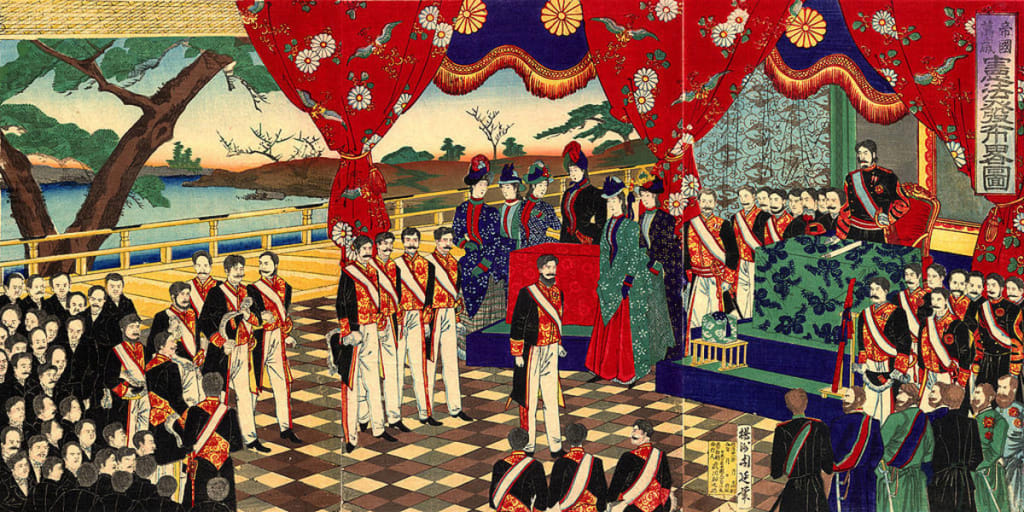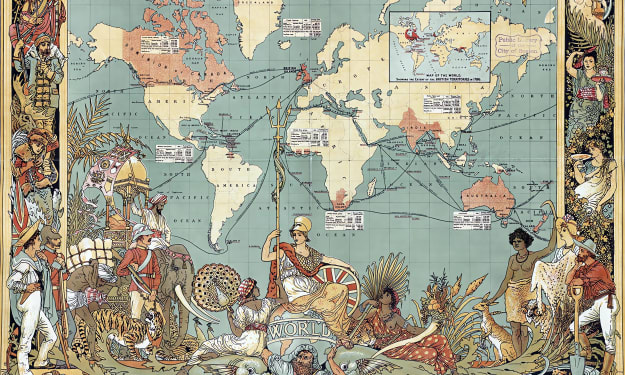The Meiji Era
The Fall of the Samurai and the Modernization of Japan

The period from 1868 to 1912 marked a transformative era in Japan's history, characterized by rapid modernization and westernization. Prior to the Meiji era, Japan had followed a policy of isolation known as "sakoku," which severely limited contact and trade with foreign peoples. However, by the mid-1800s, the world was already experiencing the rise of modernity, with most countries enjoying international trade and the emergence of important new inventions such as electric batteries and steam engines. Despite this, Japan still maintained a feudal system of government that was considerably behind the rest of the world.
The arrival of the Perry expedition in July 8, 1853, also known as the Perry Mission, marked a significant turning point in Japanese history. This diplomatic expedition, led by Commodore Matthew and Perry of the United States Navy, aimed to establish trade relations with Japan. However, the Japanese government resisted signing a commercial treaty, prompting Perry to order his ships to advance towards the capital of Edo and position themselves without their cannons towards the city of Uraga. Perry also fired warning shots from his 73 cannons, displaying the ships' firepower and threatening the Japanese authorities.
From the Japanese perspective, the arrival of the Perry expedition was a significant event that highlighted Japan's technological and military inferiority compared to the Western powers. The Japanese government realized that the only way to avoid foreign occupation was to negotiate with the Americans. After several rounds of negotiations, the Treaty of Kanagawa was signed in 1854, allowing the entry of American ships into Japanese ports and establishing diplomatic relations between the two countries.
The Perry Expedition marked the beginning of an era of transformation in Japan, as the country opened its doors to trade and later to other Western nations. This had a profound impact on its political culture and society, accelerating Japan's modernization significantly. However, not all Japanese were satisfied with the arrival of so many changes, particularly those who benefited from the feudal system of houses, such as the Samurai.
The Meiji era officially began in 1868, under the leadership of Emperor Mutsuhito, who embarked on a comprehensive program of modernization and Westernization. This included political, social, and economic reforms aimed at strengthening the country and competing with Western powers. The Meiji government abolished the class system, implemented a centralized government, and created a constitution. The modernization of Japan was a key aspect of the Meiji era, inspired by the Western powers. The Japanese government embarked on a process of accelerated industrialization, building factories, developing textile and steel industries, and establishing modern transportation systems such as railroads and telegraph lines. Japan also adopted economic policies that encouraged free trade and large-scale production.
Education played a crucial role in the modernization of the country, with the Meiji government establishing a comprehensive public education system based on the Western model. Japanese students were sent abroad to acquire knowledge in various fields, and many foreign teachers and specialists were hired to teach in Japan. This emphasis on education and the acquisition of Western knowledge was key to the country's rapid modernization.
The Meiji government also focused on catching up in the military sector, which was a high priority in an era of European and American imperialism. Japan now had an army with written qualifications, and the military academies brought in trainers from France, Prussia, and other Western countries to teach recruits modern tactics and weaponry.
In order to transform Japan's agrarian economy into an industrialized one, many Japanese scholars were sent abroad to study Western sciences and languages. Transport and communication networks were improved through large government investments, and the government directly supported the prosperity of businesses and industries, especially the large and powerful family businesses called zaibatsu.
The Meiji government implemented measures to reconcile and integrate the Samurai into the new social order in order to avoid future conflicts. The Rebellion also influenced how Japan came to view its history and to re-evaluate the role of the Samurai in society.
Beyond internal reforms, Japan also began to play a more active role on the international stage during the Meiji era. The country carried out a series of military reforms and modernized its weapons to Western standards, culminating in Japan's victory over China in the first Japanese war between 1894 and 1895 and Russia in the Russo-Japanese war between 1904 and 1905, establishing Japan as a regional military power.
The Meiji government's tireless efforts towards modernization and westernization were fundamental in establishing the foundations of the development that Japan would achieve throughout the 20th century, leaving a lasting legacy until the present day. The impact of the Meiji era is felt in all aspects of Japanese society, from economy and politics to culture and technology, and its influence extends beyond the borders of the country, inspiring admirers and scholars around the world.
About the Creator
A História
"Hi. My name is Wellington and I'm a passion for general history. Here, I publish articles on different periods and themes in history, from prehistory to the present day.






Comments
There are no comments for this story
Be the first to respond and start the conversation.